The Question Behind the Lens
Photography has always lived in a curious space between craft and art, between evidence and expression. From its earliest days in the nineteenth century, critics and practitioners alike have wrestled with a deceptively simple question: is a photograph merely a record of what stood before the lens, or can it be something more — an artwork in its own right?
The question matters because photography occupies a unique position in the visual arts. A painting is unambiguously the product of an artist’s hand; a sculpture bears the marks of chisels and tools. A photograph, by contrast, seems to arrive ready‑made, captured in an instant by a machine. That apparent immediacy has long fuelled suspicion: if the camera does the work, where does artistry enter the frame? For some, the very mechanical nature of the process seemed to disqualify it from the category of art. For others, the ability to capture reality with such fidelity was itself a new kind of artistry, one that demanded recognition on its own terms.
And yet, from the very beginning, photographers have insisted that their medium is not just mechanical but expressive. Julia Margaret Cameron softened her focus to create dreamlike portraits that critics derided as clumsy but which she defended as intentional, poetic visions. Alfred Stieglitz not only produced his own work but also campaigned tirelessly for photography’s acceptance in galleries, arguing that the medium could stand shoulder to shoulder with painting and sculpture. Henri Cartier‑Bresson spoke of the “decisive moment,” when timing and instinct transform a snapshot into something enduring, a fragment of life elevated into art. Each of these figures claimed that artistry lies not in the subject itself, but in the choices of the photographer — framing, timing, light, and intent.
The debate has never really gone away. In the twentieth century, documentary photographers like Dorothea Lange and Robert Capa were celebrated for their ability to capture truth, while contemporaries such as Man Ray and László Moholy‑Nagy pushed photography into surrealism and abstraction. The medium proved it could be both mirror and invention, both document and dream.
Today, the question feels more urgent than ever. Digital technology has blurred boundaries further, allowing photographers to manipulate images with ease, to composite multiple exposures, or to push colour and tone beyond what the eye could ever see. At the same time, photography remains a tool of record: the medium of journalism, science, surveillance, and memory. It is both evidence and expression, document and artwork. The smartphone in every pocket has made photography ubiquitous, but ubiquity has only sharpened the question of value: when everyone is a photographer, what makes one image art and another mere record?
So where does the photograph end and the artwork begin? Is the distinction even meaningful, or is it a false binary that collapses under scrutiny? This article will not offer a final answer — nor should it. Instead, it will explore the history, philosophy, and practice of photography to show how the boundary has always been porous, shifting with context, intention, and audience. The aim is not to close the debate, but to open it wider, giving readers more to consider the next time they stand before a photograph and wonder: am I looking at a record, or at a work of art?
Photography as Record: The Documentary Tradition
From its very beginnings, photography was celebrated — and sometimes mistrusted — for its apparent ability to capture reality with mechanical precision. When Louis Daguerre unveiled the daguerreotype in 1839, it was hailed as a “mirror with a memory.” Unlike painting or drawing, which required interpretation and skill, the camera seemed to offer an unmediated imprint of the world. A photograph could record the face of a loved one, the façade of a building, or the devastation of a battlefield with a fidelity that no human hand could match. For many, this was miraculous; for others, it was unsettling, as though the machine had usurped the role of the artist.
This documentary power quickly became photography’s defining feature. Scientists used it to catalogue plants, stars, and microscopic organisms, building visual archives that could be studied and shared across continents. Governments employed it for surveys, censuses, and identification, embedding photography into the machinery of administration and control. Journalists carried cameras to wars and revolutions, bringing back images that shaped public opinion and, in some cases, altered the course of history. In each of these contexts, the photograph was valued not as art but as evidence — a trustworthy record of what had been.
The association between photography and truth became so strong that it entered the courtroom. Photographs were admitted as legal evidence, their mechanical origins lending them an aura of objectivity. A photograph, it was assumed, could not lie. It showed what was there, in a way that words or sketches could not. The photograph seemed to bypass human subjectivity, offering a direct imprint of reality. This belief in photographic truth became one of the medium’s most enduring myths.
Yet even in these early uses, the supposed neutrality of photography was more complicated than it appeared. Choices of framing, timing, and exposure shaped what was included and what was left out. A battlefield photograph might show the dead but not the chaos of combat. A portrait might flatter or diminish its subject depending on the angle of the lens or the length of the exposure. Even the decision of when to press the shutter was a subjective act. Still, the cultural perception persisted: photography was a medium of record, a way of fixing reality in time.

This documentary tradition has remained central to photography’s identity. Think of Dorothea Lange’s Migrant Mother, which came to symbolise the hardship of the Great Depression. Or Robert Capa’s images from the Spanish Civil War, which brought the brutality of conflict into newspapers around the world. These photographs are not just pictures; they are documents, evidence of events that shaped history. They are valued not only for their aesthetic qualities but for their testimonial power — their ability to stand as witnesses to suffering, resilience, and change.
Other examples reinforce this dual role. The work of Walker Evans for the Farm Security Administration blurred the line between document and art, producing images that were both records of poverty and enduring works of visual culture. Sebastião Salgado’s epic projects on workers and migration are celebrated as art exhibitions, yet they also function as social documents, bearing witness to global inequality. The documentary tradition, in other words, has never been purely factual; it has always carried an expressive charge.
But herein lies the tension. If photography is primarily a medium of record, does that limit its claim to being art? A census form or a passport photo may be technically flawless, but few would call them artworks. The very qualities that make photography valuable as evidence — accuracy, fidelity, neutrality — seem at odds with the qualities we often associate with art: imagination, expression, interpretation. A photograph that aspires to objectivity may be powerful, but is it creative?
This tension sets the stage for the debates that followed. Was photography destined to remain a servant of science, journalism, and bureaucracy? Or could it transcend its documentary roots to become a medium of artistic expression? The answer, as history shows, would depend not only on what photographers did with their cameras, but on how audiences, critics, and institutions chose to see their work. The same image could be filed in an archive as evidence or hung in a gallery as art — and sometimes, over time, it could be both.
Photography as Expression: The Artistic Tradition
If photography began life as a tool of record, it did not take long for artists to push against that boundary. From the mid‑nineteenth century onwards, photographers argued that their medium was not merely mechanical but capable of expression, interpretation, and artistry. The camera might be a machine, but the eye behind it, they insisted, was human — and it was there that artistry resided.
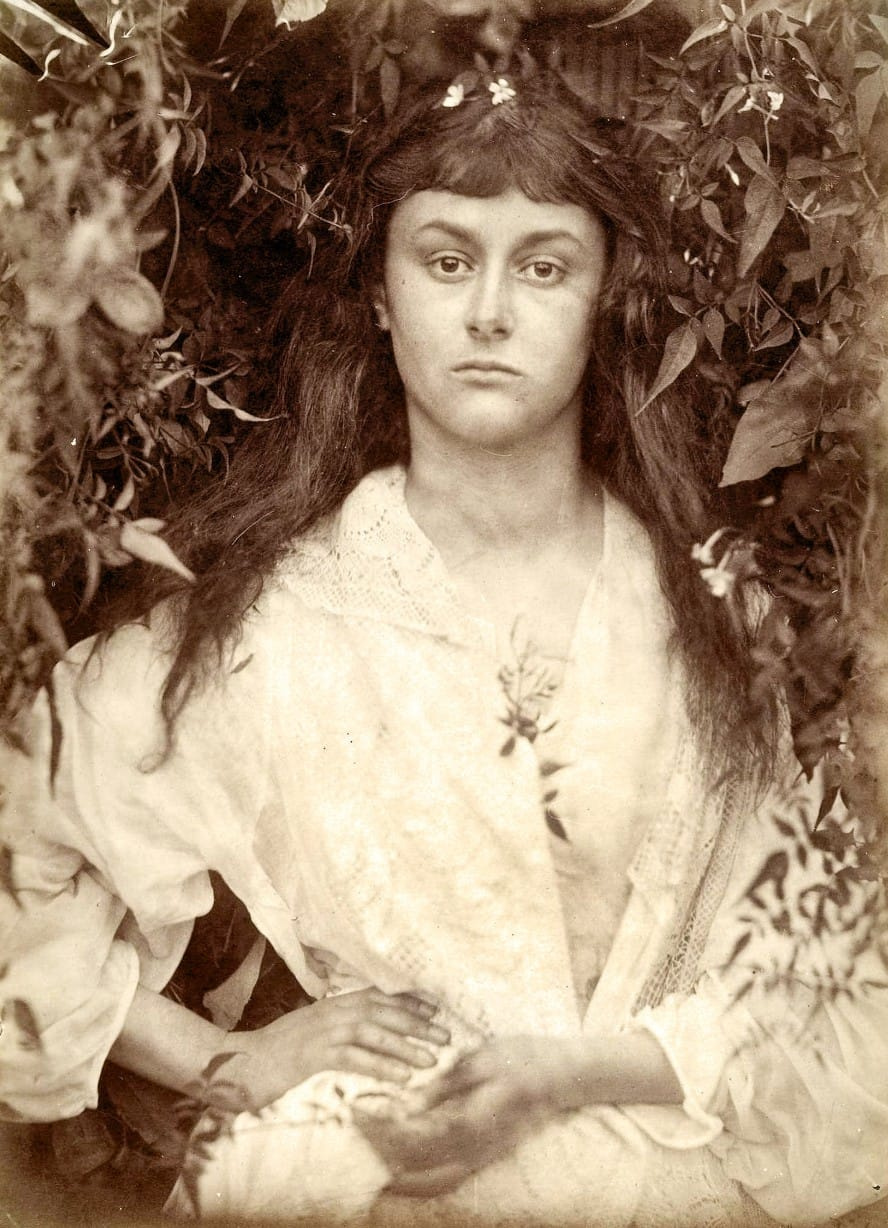
One of the earliest champions was Julia Margaret Cameron, whose soft‑focus portraits of friends and intellectuals in the 1860s were criticised at the time for their technical “imperfections.” Yet Cameron insisted that her blurred edges and dramatic lighting were deliberate choices, designed to evoke mood and character rather than clinical accuracy. In doing so, she reframed photography as a medium of interpretation, not just documentation. Her portraits of figures such as Charles Darwin and Alfred Tennyson were not simply likenesses; they were attempts to capture essence, atmosphere, and spirit.
By the early twentieth century, figures like Alfred Stieglitz were campaigning for photography’s place in the gallery. Through his journal Camera Work and his New York gallery “291,” Stieglitz presented photographs alongside paintings and sculptures, insisting that the medium deserved equal recognition. His own series, such as Equivalents — cloud studies intended to express inner states of mind — made the case that a photograph could be as abstract and symbolic as any painting. Stieglitz’s insistence that a photograph could embody emotion and metaphor helped shift the medium from the margins of craft into the centre of artistic debate.
Other practitioners reinforced this claim through their distinctive styles. Edward Weston transformed peppers, shells, and nudes into sculptural forms, emphasising line, texture, and purity of form. His work suggested that the camera could reveal beauty in the everyday, elevating the ordinary into the monumental. Henri Cartier‑Bresson, meanwhile, spoke of the “decisive moment,” the instant when composition, timing, and intuition converge to create an image that transcends mere record. For Cartier‑Bresson, the artistry lay in anticipation and instinct — the ability to see and capture a fleeting alignment of elements that would never occur again.
This expressive tradition demonstrates that photography is not bound by its subject matter. A photograph of a street corner can be mundane or profound, depending on how it is seen and framed. Light, shadow, perspective, and timing all shape the meaning of the image. Just as a painter chooses what to emphasise on canvas, the photographer chooses what to reveal through the lens. The artistry lies not in the subject itself but in the act of seeing — in the transformation of the everyday into something resonant.
The recognition of photography as art was not immediate. For decades, critics dismissed it as a lesser medium, too dependent on machinery to be truly creative. Painters often saw it as a threat, a mechanical rival that could reproduce likenesses more quickly and cheaply. But over time, exhibitions, publications, and the persistence of photographers themselves shifted perceptions. By the mid‑twentieth century, photography had secured its place in museums and galleries, no longer confined to the realm of science or journalism. The establishment of dedicated photography departments in institutions such as the Museum of Modern Art in New York signalled that the medium had arrived as an art form in its own right.
What this history shows is that photography’s claim to artistry rests not on its subject but on its choices. The photograph is not simply what the camera records; it is what the photographer decides to show, how they frame it, and why they present it. In this sense, photography as expression is not opposed to photography as record, but layered upon it. The same image can be both document and artwork, depending on the intent of the maker and the perception of the viewer. And perhaps it is this duality — the ability to be both fact and vision — that gives photography its enduring power.
The Role of Manipulation: From Darkroom to Digital
If photography’s origins were bound up with the promise of mechanical truth, its history is equally bound up with manipulation. From the earliest days, photographers have intervened in their images — not to deceive, necessarily, but to shape, refine, and elevate them. These interventions complicate the idea of photography as a neutral record and push it closer to the realm of art.
Darkroom Alchemy
In the nineteenth and twentieth centuries, the darkroom was as much a creative space as the studio. Photographers used techniques such as dodging (holding back light to lighten areas of a print) and burning (adding extra exposure to darken others) to sculpt their images. These were not mechanical necessities but artistic decisions, shaping mood, emphasis, and narrative.
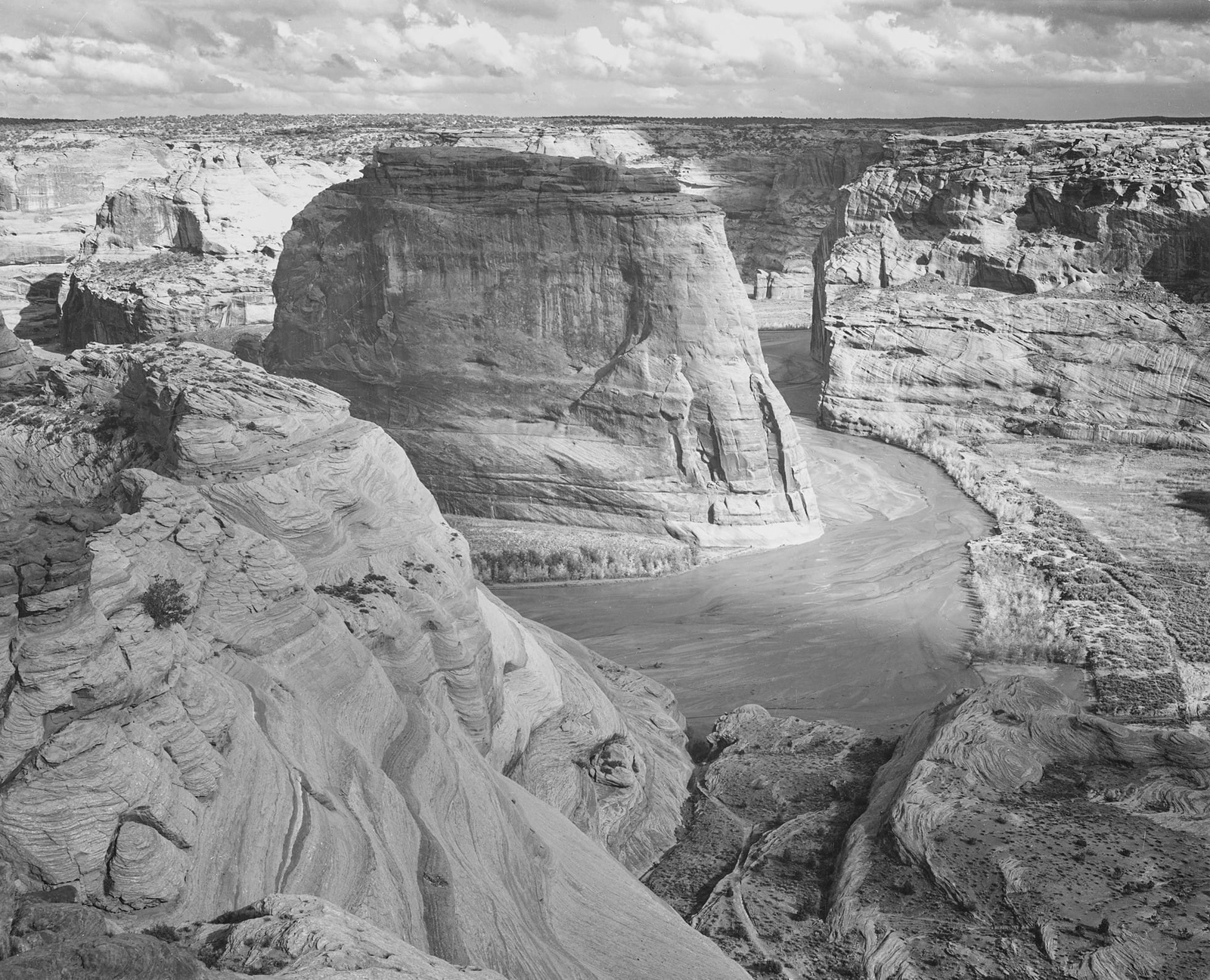
Consider Ansel Adams, whose landscapes of Yosemite are celebrated not only for their grandeur but for their tonal mastery. Adams developed the Zone System, a method of pre‑visualising and controlling exposure to achieve a precise balance of light and shadow. His prints were not simple records of what the eye saw; they were carefully crafted interpretations, the result of hours of darkroom work. Adams himself described the negative as the “score” and the print as the “performance” — a telling metaphor that places artistry squarely in the act of manipulation.
Even earlier, composite photographs were being made. In the 1850s, Oscar Rejlander created The Two Ways of Life by combining over thirty negatives into a single allegorical scene. Far from being a straightforward record, it was a constructed tableau — a photographic painting in all but name. Around the same time, Henry Peach Robinson produced Fading Away, a staged and composite image of a dying girl, which scandalised Victorian audiences but also demonstrated how photography could be used to tell stories rather than simply record facts.
Retouching and Alteration
Retouching negatives was also common practice. Portrait photographers would smooth skin, remove blemishes, or even alter facial features to flatter their sitters. These interventions were accepted as part of the craft, much as a painter might idealise a subject. The idea that a photograph was an unmediated truth was always, in practice, a convenient fiction.
By the late nineteenth century, entire industries of retouchers and studio assistants existed to ensure that portraits met social expectations of beauty and respectability. To many clients, the artistry of the photographer lay not in strict fidelity but in the ability to present them as they wished to be seen. This tension between truth and idealisation has never left photography; it resurfaces today in debates about filters, airbrushing, and digital “perfection.”
The Digital Revolution
With the arrival of digital photography, manipulation became both easier and more visible. Software like Photoshop allowed photographers to adjust colour, contrast, and sharpness with unprecedented precision. More radically, it enabled compositing, cloning, and the seamless blending of multiple images. What once required hours in the darkroom could now be achieved in minutes on a screen.
This raised new questions. Was a heavily edited photograph still a photograph, or had it become something else — a digital artwork? When Andreas Gursky digitally stitched and altered his monumental images of stock exchanges and rivers, critics debated whether they were photographs or digital constructions. The market, however, had no such hesitation: his works sold for millions, confirming their status as art. Similarly, artists like Cindy Sherman embraced digital tools to extend their long‑running explorations of identity and performance, showing that manipulation could be integral to conceptual practice.
Manipulation as Expression
What these examples show is that manipulation is not an aberration but a constant in photography. From dodging and burning to digital compositing, photographers have always shaped their images to match their vision. The line between record and artwork is therefore not drawn at the point of manipulation, but in how we interpret it.
For some, manipulation undermines photography’s claim to truth. A news image altered beyond basic tonal correction risks losing its credibility as evidence. For others, manipulation is precisely where photography becomes art — where the photographer moves beyond recording to interpreting, beyond documenting to expressing. The act of intervention is not a betrayal of the medium but an embrace of its creative potential.
The Blurred Boundary
This tension remains unresolved. A press photograph is expected to be minimally altered, preserving its value as evidence. A fine art photograph, by contrast, may be celebrated for its manipulation, its departure from reality. The same medium, the same tools, but radically different expectations.
And so the question persists: when does a photograph stop being a photograph and start being an artwork? The history of manipulation suggests that the boundary is not fixed but fluid, shifting with context, intent, and audience. Perhaps manipulation is not the exception but the rule — and the real question is how much intervention we are willing to accept before we stop calling it a photograph and start calling it something else.
Context and Intention: Gallery vs. Archive
If photography’s dual identity as record and expression is already complex, the question becomes even more tangled when we consider context. The same photograph can be seen as evidence, memory, or art depending on where it is shown and why it was made. A single print may shift meaning dramatically as it moves from one setting to another, reminding us that photographs are never static objects but cultural artefacts whose significance is constantly renegotiated.
The Power of Context
A photograph pinned to a family fridge is a keepsake, valued for its emotional resonance rather than its technical or aesthetic qualities. The same image placed in a museum frame becomes an artwork, subject to critical analysis and aesthetic appreciation. A press photograph in a newspaper is read as reportage, a slice of truth captured for public record; the same print in a gallery may be admired for its composition, symbolism, or historical weight. Context does not just influence interpretation — it can transform it.
This is not unique to photography, but the medium’s apparent neutrality makes the shift especially striking. A painting is almost always encountered as art, but a photograph can slip between categories with ease. The gallery wall, the archive box, the Instagram feed, the auction catalogue — each setting invites a different reading. The same image can be a family heirloom, a historical document, a commodity, or a conceptual artwork, depending on where and how it is encountered.
Intention of the Maker
Equally important is the photographer’s intent. A scientist photographing a specimen does not aim to make art, yet their images may later be exhibited for their beauty, as happened with early photomicrographs and astronomical plates. A photojournalist may intend to document an event, but their work can be celebrated for its artistry as well as its information — think of Nick Ut’s “Napalm Girl” or Eddie Adams’ Saigon execution photograph, both of which became iconic not only for their documentary power but for their haunting composition. Conversely, a fine art photographer may deliberately mimic the style of documentary to blur the line between fact and fiction, as in the staged works of Jeff Wall or the constructed realities of Gregory Crewdson.
This raises a thorny question: does art status come from the image itself, from the maker’s intention, or from the context in which it is presented? If Dorothea Lange’s Migrant Mother was taken as documentary evidence for the Farm Security Administration, does its later elevation to iconic artwork change its nature? Or does it simply reveal that photographs can inhabit multiple roles at once, carrying both evidential and aesthetic weight?
The Archive and the Gallery
The archive and the gallery represent two poles of photographic meaning. In the archive, photographs are catalogued, indexed, and preserved as records. Their value lies in accuracy, completeness, and reliability. They are treated as data, as evidence, as fragments of history to be retrieved and studied. In the gallery, photographs are curated, sequenced, and displayed for aesthetic or conceptual impact. Their value lies in resonance, interpretation, and dialogue with other works.
Yet these poles are not mutually exclusive. An archival photograph can migrate into the gallery, as when vernacular snapshots are re‑presented as art objects, or when historical images are recontextualised in exhibitions. Likewise, an artwork can end up in an archive, preserved for future study as evidence of cultural practice. The boundaries are porous, and photographs often live multiple lives across different contexts.
The Shifting Boundary
What this suggests is that the line between photograph and artwork is not fixed in the image itself but negotiated through context and intention. A photograph may begin as a record and later be reinterpreted as art. Or it may be created as art but later valued as evidence of a time, place, or culture. The same print can be both document and artwork, depending on who is looking, where it is displayed, and what meanings are attached to it.
In this sense, the photograph is always both — a record of light at a moment in time, and a potential artwork waiting for context to activate it. The question is not only what the photograph shows, but where it is shown, why it was made, and how it is received. And perhaps this is photography’s greatest strength: its ability to move fluidly between worlds, to be at once memory and monument, evidence and expression, archive and art.
Blurred Boundaries: Hybrids and Crossovers
If photography as record and photography as expression can be seen as two poles, then much of the most interesting work in the medium exists somewhere in between. Artists and photographers have long experimented with ways of stretching, bending, or outright erasing the line between document and artwork. These hybrids and crossovers complicate the question of where the photograph ends and the artwork begins, and they remind us that the medium’s power often lies in its refusal to conform to a single definition.
Staged Realities
One of the most striking examples is the tradition of staged photography. Photographers such as Jeff Wall and Cindy Sherman construct elaborate scenes, often using actors, sets, and props, before photographing them. The resulting images look like documentary records, but they are in fact carefully orchestrated fictions. Wall’s large‑scale lightboxes mimic the authority of advertising or reportage, while Sherman’s self‑portraits parody cultural archetypes and stereotypes. In both cases, the photograph is simultaneously a record of something that happened in front of the camera and an artwork designed to question representation itself.
This tradition has roots in the nineteenth century, when photographers like Oscar Rejlander and Henry Peach Robinson staged allegorical tableaux using multiple negatives. Their work blurred the line between photography and painting, provoking debates about whether such images were “true” photographs or something else entirely. Today, artists such as Gregory Crewdson continue this lineage, producing cinematic scenes that look like fragments of films, meticulously lit and staged but presented as single still images.
Photomontage and Collage
Another hybrid form is photomontage, where multiple negatives or digital files are combined into a single image. This practice dates back to the early twentieth century, with artists like Hannah Höch and the Dadaists cutting and pasting photographs to create surreal juxtapositions. Their collages were political as well as aesthetic, using the authority of photographic fragments to critique society and culture.
Later, John Heartfield used photomontage as a weapon of satire, producing biting anti‑fascist works in the 1930s. Today, digital compositing allows for seamless blends that can be indistinguishable from a single exposure. These works challenge the idea of the photograph as a singular record, instead presenting it as a constructed artwork. They also highlight how easily photography can be manipulated, raising questions about authenticity, authorship, and trust.
Conceptual Photography
In the 1960s and 70s, conceptual artists began using photography not as an end in itself but as a means of documenting ideas, performances, or interventions. Figures like Bernd and Hilla Becher catalogued industrial structures with rigorous typologies, creating grids of water towers, blast furnaces, and cooling towers that were both systematic records and minimalist artworks. Others, such as Vito Acconci or Chris Burden, used photography to record ephemeral acts and performances.
In these cases, the photograph is both document and artwork: it records something real, but the act of recording is itself the artistic gesture. The photograph becomes evidence of an idea, a trace of something that cannot be repeated, and in doing so it complicates the distinction between record and art object.
Cross‑Media Practices
Contemporary artists often blur boundaries further by combining photography with painting, sculpture, or installation. A photograph might be printed on unconventional materials such as metal, fabric, or glass; layered with paint or text; or embedded in a larger installation. These works resist categorisation: they are photographs, but they are also objects, collages, or environments.
Artists like Gerhard Richter have moved fluidly between painting and photography, producing blurred photo‑paintings that question the reliability of both mediums. Others, such as Thomas Demand, construct paper models of real spaces, photograph them, and then destroy the models — leaving only the photograph as both record and artwork. In such cases, the photograph becomes raw material for broader artistic exploration, simultaneously evidence of a process and an artwork in its own right.
The Productive Ambiguity
What unites these hybrids is their refusal to sit neatly on one side of the divide. They exploit photography’s dual identity, using its documentary authority while simultaneously undermining it. They remind us that the photograph is never just a neutral record, nor just an artwork, but something that can shift between roles depending on how it is made and seen.
This ambiguity is not a weakness but a strength. It is precisely because photography can be both record and artwork that it continues to provoke debate, inspire experimentation, and resist easy definition. The hybrids and crossovers show us that the boundary is not a line to be policed but a space to be explored — a fertile ground where photography’s most innovative and challenging work often takes root.
Audience Perception: Who Decides
If the photographer’s intent and the context of display shape how a photograph is understood, the final piece of the puzzle lies with the audience. After all, no artwork exists in a vacuum. Meaning is not only made in the act of creation but also in the act of reception. The photograph may be fixed on paper or screen, but its significance is fluid, shifting with each set of eyes that encounter it.
The Role of the Viewer
When we stand before a photograph, we bring with us expectations, cultural assumptions, and personal experiences. A press photograph in a newspaper may be read as evidence, while the same image in a gallery may be admired for its composition. A family snapshot may be dismissed by a stranger as ordinary, yet for those pictured it may carry profound emotional weight. The photograph itself has not changed, but the viewer’s frame of reference has.
This suggests that the boundary between photograph and artwork is not fixed in the object but negotiated in the encounter. The viewer decides — consciously or unconsciously — whether to treat the image as record, art, or something in between. In this sense, the audience is not a passive recipient but an active participant in the creation of meaning.
Cultural Expectations
Different audiences bring different expectations. A historian may value a photograph for its documentary accuracy, while an artist may value the same image for its aesthetic qualities. A family member may treasure a snapshot for its emotional resonance, while a critic may dismiss it as banal. None of these readings is “wrong”; they simply reflect the multiplicity of ways photographs can be experienced.
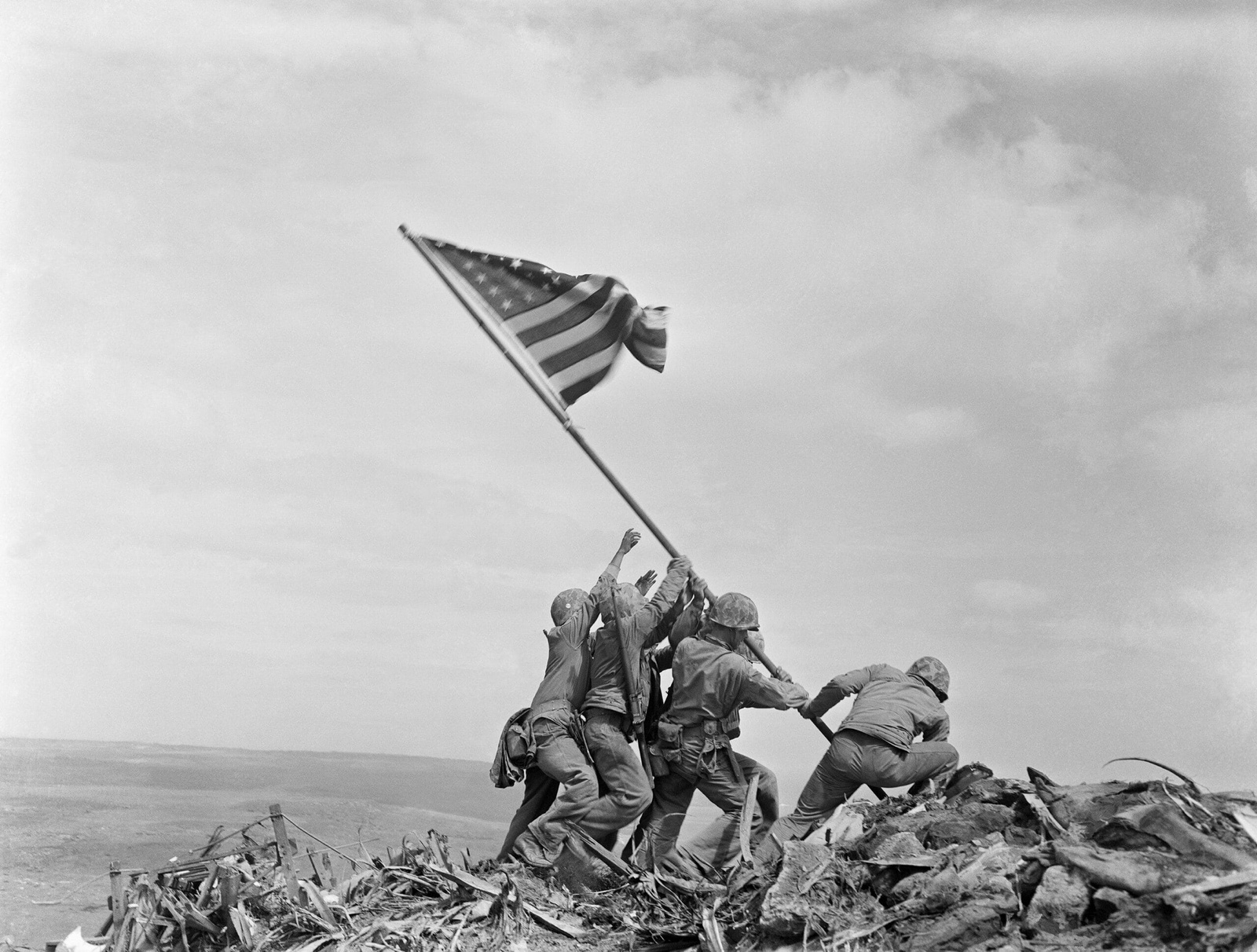
This multiplicity is why photographs often live multiple lives. A wartime image may begin as reportage, later enter an archive as historical evidence, and eventually be exhibited in a museum as art. Consider Joe Rosenthal’s photograph of the flag‑raising at Iwo Jima: first published as news, later enshrined as patriotic icon, and now studied as both history and art. Each audience redefines its meaning, layering new interpretations over the old.
Authority and Institutions
Institutions also play a role in shaping perception. When a museum hangs a photograph on its walls, it confers artistic status. When a newspaper prints the same image, it confers documentary authority. Competitions, galleries, and publishers act as gatekeepers, guiding audiences towards one interpretation or another. The same photograph may be rejected from a photojournalism contest for being “too manipulated” yet celebrated in a fine art exhibition for the very same qualities.
But audiences are not passive. In the age of social media, photographs circulate freely, detached from their original contexts. A photo uploaded to Instagram may be consumed as art, as evidence, or as entertainment, depending on who sees it and how they interpret it. A meme may begin life as a press photograph, stripped of its original meaning and repurposed for humour or critique. The power to decide what a photograph “is” has become more distributed than ever, shifting from institutions to networks of viewers.
The Shifting Line
What this reveals is that the line between photograph and artwork is not only porous but unstable. It shifts with each encounter, each audience, each cultural frame. The same image can be many things at once: record, memory, evidence, artwork. A photograph is never just what it shows; it is also what we bring to it, what we expect from it, and what we choose to see in it.
In the end, perhaps the most important question is not what the photograph is, but how we choose to see it. The audience, as much as the maker, decides where the photograph ends and the artwork begins. And because audiences change — across time, across cultures, across contexts — the meaning of a photograph is never finally settled. It remains open, contested, and alive.
Conclusion: A Question That Refuses to Settle
So, where does the photograph end and the artwork begin? After tracing photography’s history as both record and expression, exploring manipulation, context, and perception, the answer seems less like a line and more like a shifting horizon. Every attempt to pin it down — whether in the darkroom, the gallery, or the archive — reveals how fluid the boundary really is, and how resistant photography remains to neat categorisation.
For some, the photograph will always be first and foremost a document: a trace of light, a record of what stood before the lens, a fragment of reality fixed in time. For others, it is unavoidably an artwork: a product of choices, framing, and interpretation, no less crafted than a painting or sculpture. And for many, it is both at once — evidence and expression, fact and vision, document and art, coexisting in a single frame.
What complicates matters further is that photographs rarely live a single life. They migrate across contexts, from newspapers to museums, from family albums to auction houses, from social media feeds to historical archives. They are read differently by historians, artists, collectors, and casual viewers. The same image can be treasured as memory, scrutinised as evidence, and admired as art — sometimes all at once, sometimes in succession, sometimes in contradiction.
This fluidity is not a weakness but a defining strength of the medium. Unlike many other art forms, photography resists being pinned down to a single role. It is at once democratic and elite, personal and public, ephemeral and monumental. A photograph can be a child’s school portrait, a piece of forensic evidence, a gallery centrepiece, or a viral meme — and sometimes, remarkably, all of these within its lifetime.
Perhaps, then, the real value of the question lies not in finding a definitive answer but in keeping the debate alive. To ask where the photograph ends and the artwork begins is to ask how we see, what we value, and what we expect from images. It is to acknowledge that photography’s power lies precisely in its ambiguity — in its ability to be many things to many people, to slip between categories and unsettle our assumptions.
And so the question remains open, as it should. The next time you encounter a photograph — whether in a gallery, a newspaper, or your own camera roll — pause for a moment. Ask yourself: am I looking at a record, an artwork, or both? The answer may shift with time, with context, and with you. And perhaps that shifting, that refusal to settle, is what makes photography not only enduring but endlessly alive.
Now, as you encounter three of my own works — The Brush Factory, Male Banded Demoiselle, and The Mariner’s Dream #7 — I invite you to test the very questions raised here. Do you see them as straightforward photographs, as artworks shaped by interpretation, or as something that unsettles both categories at once? Your answer may reveal less about the images themselves than about the expectations you bring to them — and perhaps that is where the real boundary lies.




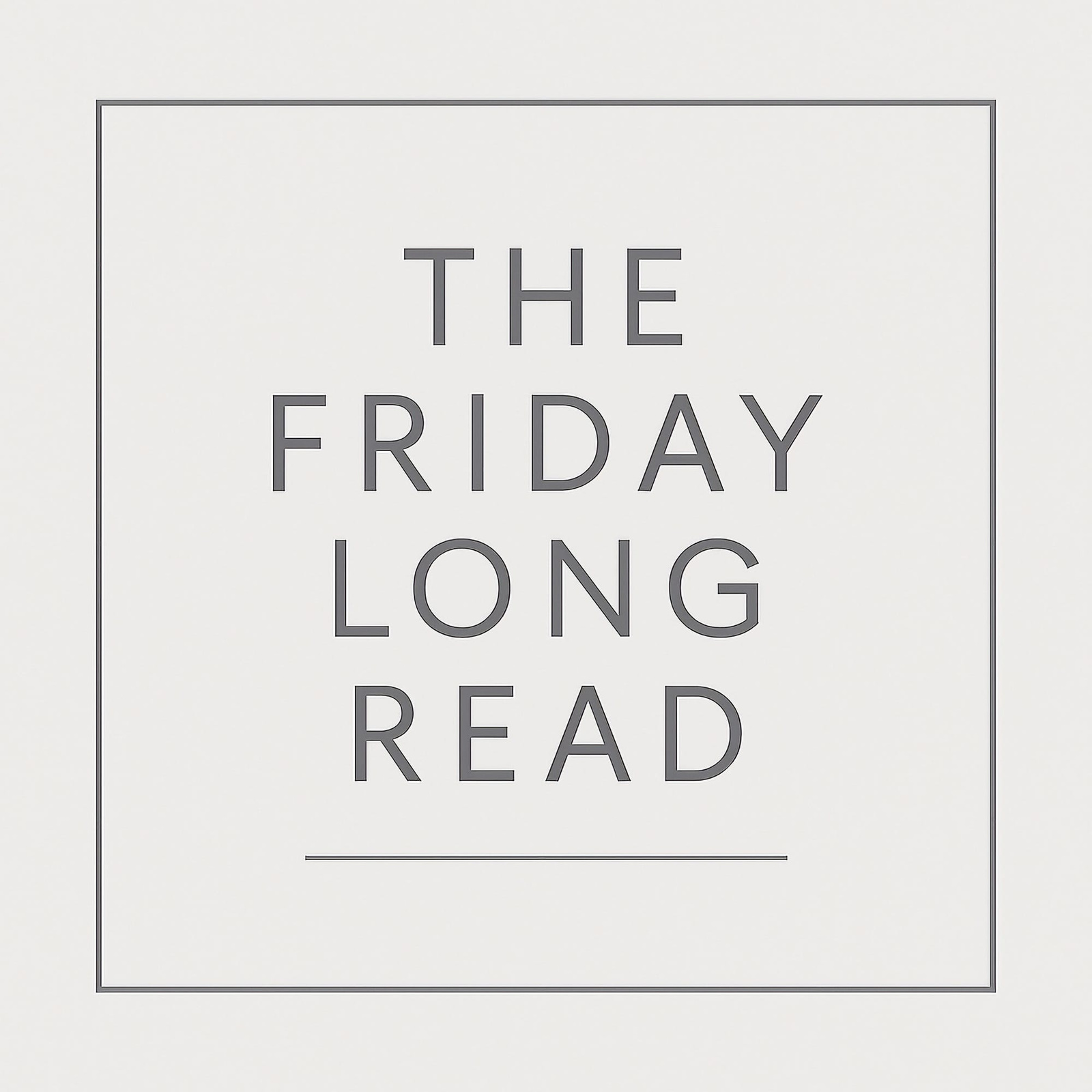
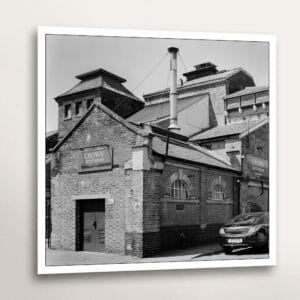
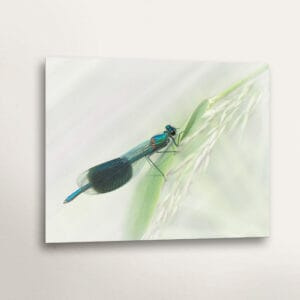
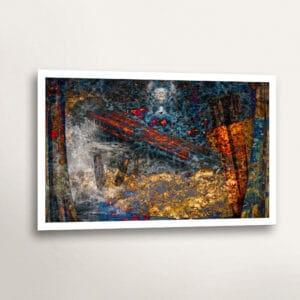
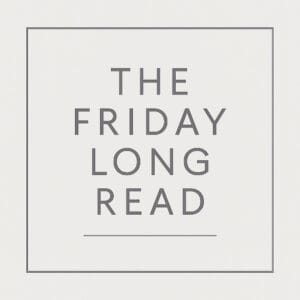

One Comment
After reading this, do you feel that a photograph’s status as art depends more on the creator’s intention or on how you, as the viewer, interpret it? And has your own perspective on this shifted over time?